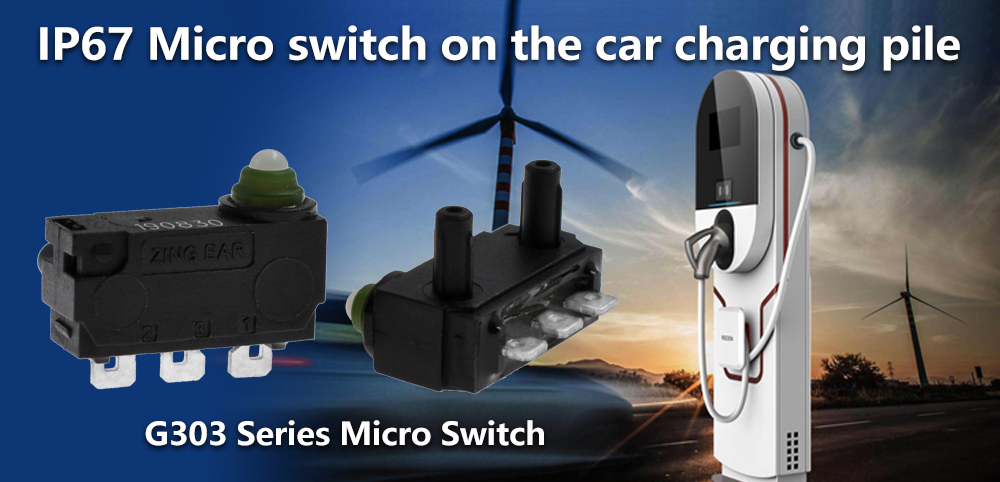As the world transitions towards a greener future, electric vehicles have become increasingly popular, leading to a surge in the demand for car charging piles. However, ensuring the safety and optimal performance of these charging stations is of paramount importance. This is where micro switches come into play. These tiny but powerful components play a vital role in enhancing the safety and efficiency of car charging piles. By providing precise control and reliable switching capabilities, micro switches ensure that the charging process is smooth, preventing any potential damage or accidents. Moreover, they enable intelligent features such as overcurrent protection, short-circuit prevention, and temperature monitoring, making them indispensable in the world of electric vehicle charging infrastructure. In this article, we will dive deeper into the significance of micro switches in car charging piles and explore how they contribute to improving safety and performance in this rapidly evolving industry.

What are car charging piles?
Car charging piles, also known as electric vehicle charging stations or EV chargers, are infrastructure components that supply electric power to charge electric vehicles (EVs). These charging stations are essential for the widespread adoption of electric vehicles and are typically found in public areas, parking lots, and residential complexes.
EV chargers come in various types, including slow chargers, fast chargers, and rapid chargers. Slow chargers provide a low charging rate and are suitable for overnight charging, while fast chargers offer a higher charging rate and can charge an EV in a few hours. Rapid chargers, on the other hand, provide an even faster charging rate and can charge an EV to 80% capacity in just 30 minutes.
The importance of safety in car charging piles
Safety is a critical aspect of car charging piles, as any malfunction or error during the charging process can lead to serious consequences. Electric vehicles rely on high-voltage batteries, and any mishap can result in electrical shock, fire, or explosion. Therefore, it is crucial to have robust safety measures in place to prevent accidents and ensure the well-being of users and the surrounding environment.
The Role of micro switches in ensuring safety
IP67 Micro switches play a pivotal role in ensuring the safety of car charging piles. These small, sensitive switches are designed to detect changes in force or position and provide precise control over the charging process. By incorporating microswitches into the charging infrastructure, potential safety hazards can be mitigated.
One of the key safety features enabled by microswitches is overcurrent protection. Electric vehicles have specific charging limits, and exceeding them can lead to battery damage or even fire hazards. Micro switches can detect excessive current flow and immediately interrupt the charging process, preventing any potential damage.
Additionally, IP67 Micro switches are instrumental in preventing short circuits. In the event of a short circuit, the microswitch can quickly detect the abnormal current flow and interrupt the charging process to avoid further damage. This feature ensures that both the charging station and the electric vehicle remain safe during the charging process.
Furthermore, micro switches enable temperature monitoring, which is crucial in preventing overheating. Electric vehicles generate heat during the charging process, and excessive heat can degrade the battery’s performance and lifespan. By continuously monitoring the temperature, micro switches can trigger safety measures, such as slowing down the charging rate or shutting off the charging process if the temperature exceeds safe limits.
How micro switches enhance the performance of car charging piles
In addition to ensuring safety, micro switches also play a significant role in enhancing the performance of car charging piles. These switches offer reliable switching capabilities, allowing for precise control and optimization of the charging process.
One of the primary performance-enhancing features of micro switches is their ability to provide accurate feedback regarding the status of the charging process. Micro switches can detect when a connector is properly inserted into the charging port, ensuring a secure connection. This feedback mechanism eliminates any ambiguity and guarantees a reliable charging experience for users.
Moreover, micro switches enable intelligent charging features, such as smart charging and load balancing. With the help of micro switches, charging stations can intelligently distribute power among multiple connected vehicles, optimizing the charging process and minimizing the strain on the power grid. This ensures a more efficient and balanced charging experience, reducing waiting times and maximizing the utilization of charging infrastructure.
Different types of micro switches used in car charging piles
There are several types of micro switches used in car charging piles, each with its own unique characteristics and applications. The most commonly used types include:
1. Basic Micro Switches
These switches are the standard choice for most applications. They are versatile, cost-effective, and reliable, making them suitable for general switching purposes in car charging piles.
2. Sealed Micro Switches
These switches are designed to withstand harsh environments, such as extreme temperatures, moisture, and dust. They provide enhanced protection against external factors, ensuring long-lasting performance in challenging conditions.
3. Subminiature Micro Switches
These switches are compact and lightweight, making them ideal for space-constrained applications. They are commonly used in portable charging stations and EV charging cables.
4. High-Current Micro Switches
As the name suggests, these switches are capable of handling high current loads. They are specifically designed for heavy-duty applications, where high-power charging is required.
Choosing the right type of micro switch depends on the specific requirements of the car charging pile and the desired performance characteristics.
